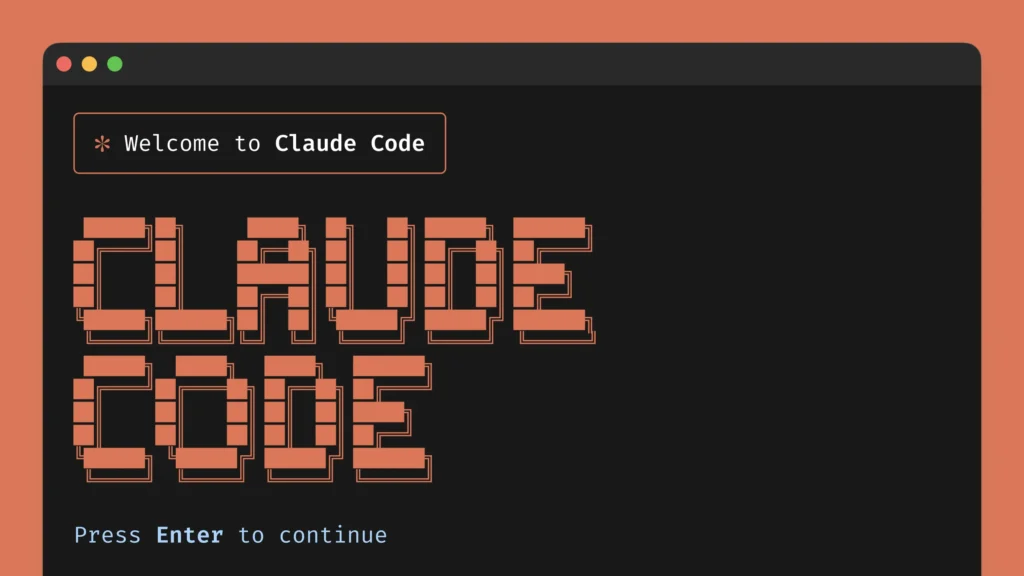How Much does Claude Code Cost? A Guide for Developers and Teams

Anthropic’s Claude Code is one of the more prominent AI coding assistants in 2025: a productized experience for developers that pairs Anthropic’s Claude models (Sonnet and Opus families) with terminal and IDE integrations, subscription plans, and a pay-as-you-go API. But “how much does it cost?” isn’t a single number — it depends on whether you use the web/desktop app (Pro/Max tiers), the team/enterprise seat plans, or the API (token billing).
What subscription tiers does Claude Code offer and how much will I pay as an individual?
Anthropic sells Claude Code both as part of its consumer/subscription offering and as a developer-oriented product. For individual users the headline options (as of August 2025) are:
- Pro (individual) — marketed toward everyday productivity and light coding sprints. The publicly stated price is about \$20/month when billed monthly; Anthropic also shows a discounted annual equivalent (around \$17/month on an annual plan). Claude Code functionality (Sonnet models, basic Code features) is included in this tier.
- Max (power/professional tiers) — positioned for heavy or professional users who need higher throughput, longer context and access to Opus-class models. Anthropic lists Max 5x (roughly \$100 per person per month) and Max 20x (roughly \$200 per person per month) as the common business-facing monthly prices. These tiers raise rate limits, increase concurrent usage allowance, and may include Opus model access.
These subscription prices give a simple, fixed monthly bill and are easy to understand for individuals or single-seat use — but they are intentionally conservative in describing the limits and do not substitute for token-based API billing when you scale programmatic workloads. If you plan to run persistent automation, CI hooks, or large-scale agentic workflows, the subscription model can become limiting or more expensive than API billing for bulk usage.
How does Anthropic charge for Claude Code on the API (per token)?
What are the token prices for Sonnet and Opus models?
For developers building with the API — or for teams deploying Claude Code via API integrations — Anthropic prices most models on a per-million-tokens basis. Recent published pricing (Claude Sonnet 4 and Opus 4.1) shows a material divergence between the “Sonnet” family (designed for high throughput / cost efficiency) and the “Opus” family (the highest capability, higher cost): Claude Sonnet 4 is priced at approximately \$3 per million input tokens and \$15 per million output tokens, while Claude Opus 4 / Opus 4.1 are significantly more expensive (example: \$15 per million input tokens and \$75 per million output tokens for Opus 4.1 in the publicly posted model table).
How do tokens map to text and what does that mean for cost?
Token → word conversion varies by language and content, but a rough working conversion many engineers use is ~1,000 tokens ≈ 750 words (or ≈ 800–1,000 short pieces depending on punctuation). Using Anthropic’s published per-million rates, you can compute costs precisely for a request by splitting input tokens (what you send the model) and output tokens (what it generates):
- Example (Sonnet 4) — 2,000 input tokens + 1,000 output tokens:
Cost = (2,000 / 1,000,000) * \$3 + (1,000 / 1,000,000) * \$15 = \$0.021 (≈ 2.1 cents). ([Anthropic][2]) - Example (Sonnet 4) — 50,000 input + 25,000 output: cost ≈ \$0.525 (52.5 cents). ([Anthropic][2])
- Example (Sonnet 4) — 1,000,000 input + 500,000 output: cost = (1 * \$3) + (0.5 * \$15) = \$10.50. ([Anthropic][2])
By contrast, the same token volumes on Opus 4.1 would cost roughly 5×–7× more because of Opus’s higher per-token rates (for the 1M/500k example above, Opus would be ~\$52.50). These are the raw model compute charges before any platform, cloud, or integration fees.
Why do costs vary so much between Sonnet and Opus — which should I choose?
The short answer: capability vs. cost. Opus-class models are purpose-built for the hardest code tasks (large refactors, multi-file reasoning, agent orchestration) and therefore require more compute per token; Sonnet-class models are tuned for general coding and are more cost-effective for everyday tasks.
- If your workflow requires deep, multi-file refactors or you want the highest confidence on subtle correctness, Opus variants (and newer Opus iterations) can justify their higher per-token price.
- For iterative prototyping, test scaffolding, small refactors and code generation where you can validate outputs quickly, Sonnet models offer the best price/performance tradeoff.
Anthropic’s model roadmap (new Sonnet and Opus releases) also affects pricing and effective capacity. For example, Sonnet 4’s recent support for 1 million token context windows expands what can be done in a single request — and large-context requests change cost math (you may do fewer round-trips but each request can consume more tokens). That capability is powerful, but it also means some requests become more expensive per call, even if overall developer productivity improves.
How will Anthropic’s recent rate limits and policy changes affect costs?
Anthropic has publicly responded to extreme usage by adding weekly rate limits to Pro and Max subscriptions, and by clarifying how much “included” Sonnet/Opus time each tier should expect per week. The company says these changes will affect a small share of users (under 5%) and that users who exceed the weekly caps can purchase additional capacity at standard API rates. The limits are intended as a practical measure to keep service quality stable and to curb account sharing/reselling.
From a cost perspective, the impact is twofold:
- For light-to-moderate users: little to no change — subscriptions still offer predictable usage for typical developer workflows.
- For heavy/automated users: the predictable unlimited model is being replaced by a hybrid: subscription buckets + enforced weekly ceilings + add-on API pricing. This means you must architect for either more conservative request patterns or accept that costs will switch to usage-based overage charges.
I argue this is not unique to Anthropic — a broader shift toward tiered usage or hybrid subscription + usage billing is appearing across coding AI vendors as “inference whales” reveal the limits of flat unlimited pricing.
How many hours / tokens do you get per plan? (practical guide)
Anthropic’s public statements translate included usage into hours of Sonnet/Opus per week for Pro and Max tiers (e.g., Pro: ~40–80 hours Sonnet 4/week; Max tiers: 140–480 hours Sonnet 4/week depending on level). These estimates vary widely with codebase size and task complexity, but they are a useful rule of thumb when estimating whether a plan meets your needs. For teams using the API, Anthropic gives TPM (tokens per minute) recommendations that scale by org size so you can size rate limits to expected concurrency.
How should developers choose between Pro, Max, and the API?
Which option is most cost-effective for common workflows?
There’s no single right answer — pick the lane that aligns with how you actually use Claude:
- Pro (\$17–\$20/mo) — Best for individuals who want terminal access, occasional code generation, research, and experimentation. If most of your sessions are human-driven and short, Pro offers predictable monthly cost and included Claude Code access.
- Max (\$100–\$200/mo per seat) — Intended for daily heavy users or small teams where a seat is used intensively. Max offers higher quotas and access to Opus for the most demanding work, but it’s also where Anthropic has started to apply more granular session quotas to prevent open-ended heavy agentic use. If you consistently run high-volume automated tasks, Max might still be cheaper than API bills, but watch the published usage caps.
- API (pay-as-you-go) — Best for production deployments, automated pipelines, backends, or when you want to control exact spend. The API removes per-seat fees and allows unlimited developers behind a single deployment, but you pay per token (Sonnet is the cost-efficient default; Opus is best reserved for the highest-value tasks). Anthropic also notes integration with Amazon Bedrock and Google Cloud Vertex for enterprise consumption.
Closing: is Claude Code “expensive”?
“Expensive” is relative to use case. For single-seat developers using Claude Code interactively, the \$20/month bracket can represent huge productivity value. For teams running automated, agentic or high-throughput code tasks, token-based bills can climb fast; in practice many professional developers land in the \$100–\$200 per person per month zone unless they aggressively optimize. so prudent measurement and cost-management will be the difference between a bargain and an unwelcome bill.
Use Claude Code via CometAPI
CometAPI is a unified API platform that aggregates over 500 AI models from leading providers—such as OpenAI’s GPT series, Google’s Gemini, Anthropic’s Claude, Midjourney, Suno, and more—into a single, developer-friendly interface. By offering consistent authentication, request formatting, and response handling, CometAPI dramatically simplifies the integration of AI capabilities into your applications. Whether you’re building chatbots, image generators, music composers, or data‐driven analytics pipelines, CometAPI lets you iterate faster, control costs, and remain vendor-agnostic—all while tapping into the latest breakthroughs across the AI ecosystem.
We’re excited to announce that CometAPI now fully supports the powerful Claude Code. You only need to install Claude Code and authenticate with the obtained Comet API key and base address to use the Comet API model on Claude Code.
Why to use claude code and cursor through CometAPI?
Top Artificial Intelligence features: Easily generate, debug and optimize code using models built specifically for developers.
- Flexible Model Selection: Our comprehensive range of models allows you to develop more seamlessly.
- Seamless Integration: APIs are always available. Integrate Claude Code directly into your existing workflow in minutes.
- Using Claude Code via CometAPI will save more costs. The API provided by CometAPI is 20% off the official price and is updated with the latest model by the official.
Ready to use Claude Code? To begin, explore the model’s capabilities in the Playground and consult the API guide for detailed instructions.



